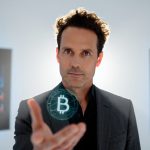 Federal Reserve’s Dark Deeds: The Silent Robbery of the Poor and Middle Class
Federal Reserve’s Dark Deeds: The Silent Robbery of the Poor and Middle Class
Nov 10, 2024
Introduction: Unveiling the Rogue Within: The Shadow Agenda
There’s an unspoken truth here, one buried beneath layers of economic jargon and respectable titles: the Federal Reserve, often exalted as the guardian of the U.S. economy, has a darker agenda. Behind its polished image lies a calculating hand that systematically drains the resources of the poor and middle class, funnelling prosperity to a select, privileged few. This institution, meant to protect, has instead become a quiet architect of inequality, wielding tools of silent oppression that go unnoticed by most—until the damage is done.
As if choreographed, the Fed’s every move fosters a recurring dance of boom-and-bust cycles, drives inflation as a hidden tax that erodes ordinary people’s wealth, and sustains a system engineered to keep the wealth gap yawning. This essay will strip away the façade, revealing how the Fed’s maneuvers act not as stabilizers but as chains, binding the many to enrich the few. To understand this manipulation is to glimpse a truth as old as time: that power often works in whispers, exploiting the people it claims to protect.
Critical Intelligence: Devaluing the Dollar’s Worth
Strategic Imperative: Since its inception in 1913, the Fed has stealthily orchestrated a 96% devaluation of the U.S., which directly hits the pockets of everyday Americans. This insidious tactic primarily hurts the poor and middle class, whose financial resources are largely tied up in cash and conservative investments. Meanwhile, the wealthy elite are shielded, as their portfolios are diversified across assets that hedge against inflation.
Market Reality: The Fed’s inflationary monetary policies are the culprit behind this silent robbery. They deliberately devalue the dollar’s purchasing power by flooding the economy with cheap money. As a result, your hard-earned dollars buy less today than they did yesterday. This hidden tax erodes the financial foundation of those who can least afford it, widening the wealth gap with every passing year.
The Great Upheaval: Guiding Economic Cycles for Power
Disruption Theme: The Federal Reserve isn’t just a passive observer of economic cycles; it’s the puppet master pulling the strings. The Fed deliberately fosters risky boom-and-bust scenarios by manipulating interest rates and money supply. The housing bubble of the early 2000s, inflated by artificially low interest rates under Alan Greenspan’s watch, is a prime example of the Fed’s reckless gambling.
Financial Combat Zone: When the bubble inevitably burst in 2008, it unleashed an economic crisis that devastated the lives of millions. Savings were wiped out, homes were lost, and jobs disappeared. Yet, the architects of this crisis—the big banks and financial institutions—escaped relatively unscathed, thanks to the Fed’s preferential treatment. This engineered chaos is a stark reminder of the Fed’s power to guide economic cycles for its agenda.
Paradigm Assassins: Lifting the Veil on Public Deception
Power Category Fusion: Despite masquerading as a public entity working in the nation’s best interest, the Federal Reserve operates in the shadows, shrouded in secrecy and limited accountability. Its quasi-public status is a clever disguise, as the regional Federal Reserve Banks are privately owned by member banks—a blatant conflict of interest that reveals its true allegiances.
The Fed’s independence from the government grants it unchecked power. Without sufficient transparency and oversight, it becomes a law, free to manipulate monetary policies to favour the banking sector and the wealthy elite. This veil of public interest must be torn apart to expose the Fed’s deceptive practices and their detrimental impact on the less privileged.
Status Quo Killers: Bank Rescues and the Betrayal of Trust
The 2008 financial crisis was a pivotal moment that exposed the Federal Reserve’s true colours. As ordinary Americans faced a tsunami of job losses and home foreclosures, the Fed used taxpayer money to bail out the banks responsible for the crisis. This bold betrayal highlighted the Fed’s skewed priorities: banks over people, profits over justice.
The Troubled Asset Relief Program (TARP), designed to stabilize the financial system, became a lifeline for Wall Street. Nearly $700 billion in taxpayer funds were used to rescue banks like Citigroup and Bank of America while the public watched in dismay as their financial security crumbled. This preferential treatment sent a clear message: the Fed values corporate interests above the well-being of its citizens.
Creative Destruction Zone: The Moral Hazard of Rewarding Risk
The Federal Reserve’s consistent bailouts of financial institutions have fostered a dangerous moral hazard. Banks now operate with a safety net, knowing their risky behaviour will be rewarded with impunity. This reckless environment, created by the Fed’s leniency, puts the entire economy at risk.
By shielding banks from the consequences of their actions, the Fed encourages a culture of irresponsibility. With the assurance of a bailout, financial institutions are incentivized to engage in hazardous practices, secure in the knowledge that they are “too big to fail.” This moral hazard distorts the market, rewards risk-taking, and undermines the very foundation of a stable economy.
The Silent Killer Tax: Inflation’s Brutal Impact
Inflation often called a silent killer tax, is the Fed’s stealth weapon against the poor and middle class. By devaluing the dollar, inflation erodes purchasing power, effectively imposing a hidden tax on consumers. This double taxation hits hardest those with fixed incomes or limited financial resources.
Consider a retiree living on a fixed pension. As inflation rises, their monthly income buys fewer groceries, pays for fewer medications, and covers fewer bills. Meanwhile, the wealthy can hedge against inflation through investments in stocks, real estate, and other assets. This insidious tax disproportionately affects the less privileged, widening the wealth gap with every tick upward on the inflation gauge.
Cognitive Arsenal: Exposing the Fed’s Wealth Transfer Mechanism
The Federal Reserve’s policies are designed to benefit the wealthy and maintain the status quo. By manipulating interest rates and controlling the money supply, the Fed can influence asset prices, favouring those who hold stocks, bonds, and real estate. This preferential treatment results in a wealth transfer from the poor and middle class to the affluent.
The Fed’s response to the 2008 financial crisis is a prime example. By slashing interest rates to near-zero levels and injecting trillions into the economy through quantitative easing, the Fed fueled a stock market rally that disproportionately benefited the top 10%. Meanwhile, the poor and middle class were left further behind, struggling with stagnant wages and rising costs.
Financial Combat Zone: Boom-and-Bust Cycles and Their Victims
The Federal Reserve’s manipulation of economic cycles creates a treacherous battlefield. Their policies fuel speculative bubbles that inevitably burst, wreaking havoc on the lives of ordinary citizens. The dot-com bubble of the late 1990s and the more recent crypto frenzy are prime examples of the Fed’s reckless gambling.
The dot-com bubble, inflated by easy money policies, lured in unsuspecting investors, only to burst and erase trillions in wealth. Similarly, the crypto bubble, fueled by near-zero interest rates and quantitative easing, attracted retail investors seeking financial freedom, only to leave them holding the bag when the Fed signalled tighter monetary policies. These boom-and-bust cycles are engineered to benefit the few at the expense of the many.
Breaking the Matrix: A Call for Transparency and Accountability
Power Category Fusion: The Federal Reserve operates with a disturbing lack of transparency and accountability. Its decisions, which impact the lives of millions, are made behind closed doors, with minimal public scrutiny. This veil of secrecy must be lifted to expose the truth behind its policies and their detrimental effects on the less privileged.
Strategic Imperative: It’s time to demand increased oversight and transparency from this influential institution. The Fed’s actions must be subject to rigorous scrutiny, especially regarding its role in fostering boom-and-bust cycles and its impact on the wealth gap. Only through greater accountability can we prevent further economic manipulation and protect the interests of everyday Americans.
Final Intel Drop: A Maverick’s Call to Action
Let me be crystal clear: The Federal Reserve is far from a benevolent guardian and a rogue actor perpetuating economic injustice. It’s time to challenge the status quo, to expose the dark deeds hidden behind a facade of stability. We must demand transparency, accountability, and a fundamental shift in the Fed’s mandate to prioritize the well-being of all Americans, not just the wealthy few.
Here’s the brutal truth: The Fed’s policies enrich the elite while keeping the masses in a perpetual cycle of financial struggle. But we, the market mavericks, refuse to be complicit in this charade. It’s time to break free from the matrix, question everything, and demand a monetary system that serves the people, not the powerful.
Pay attention because this matters: The Fed’s actions have real-world consequences. They impact the prices we pay, the jobs we have, and the financial security we strive for. It’s time to hold them accountable for their dark deeds and to reclaim economic power for the people.
The Maverick’s Manifesto: A New Economic Order
In conclusion, we present a manifesto for a new economic order:
- Financial Democracy: The Federal Reserve must be subject to democratic oversight, with policies shaped by the people, not the privileged few.
- Transparency Revolution: Demand radical transparency from the Fed, exposing their decisions and data to public scrutiny.
- Wealth Gap Eradication: Implement policies that target the root causes of economic inequality, ensuring the Fed’s actions do not widen the wealth gap.
- Accountability Nexus: Establish robust mechanisms to hold the Fed accountable for their actions, with consequences for failures and conflicts of interest.
- Economic Empowerment: To level the playing field, prioritize financial education and empowerment for all, especially the less privileged.
- Monetary Policy Overhaul: Reform the Fed’s mandate to prioritize price stability, full employment, and the well-being of all Americans, not just bankers and Wall Street.
- Break the Bank Cartel: Dismantle the Fed’s cosy relationship with the banking sector, ending preferential treatment and bailouts.
- Embrace Innovation: Encourage competition and innovation in the financial sector, breaking the stranglehold of the too-big-to-fail banks.
- Independent Audit: Conduct a comprehensive, independent audit of the Fed’s activities, highlighting their dark corners.
- A New Monetary Era: Envision a monetary system that serves the interests of all, fostering prosperity, fairness, and financial freedom for every citizen.
Strategic Imperative: Embrace the Maverick Within
Fellow mavericks, our financial destiny is not something we passively accept. It’s a battlefield where we must challenge the status quo, expose injustices, and demand change. Question everything, trust but verify, and never shy away from speaking truth to power.
The Federal Reserve, with its dark deeds and hidden agendas, is a formidable opponent. But armed with knowledge, intellectual rigour, and an unwavering commitment to economic justice, we can dismantle their control matrix and forge a new financial order that benefits all.
Inspired Reflections: Shining Light on New Ideas










